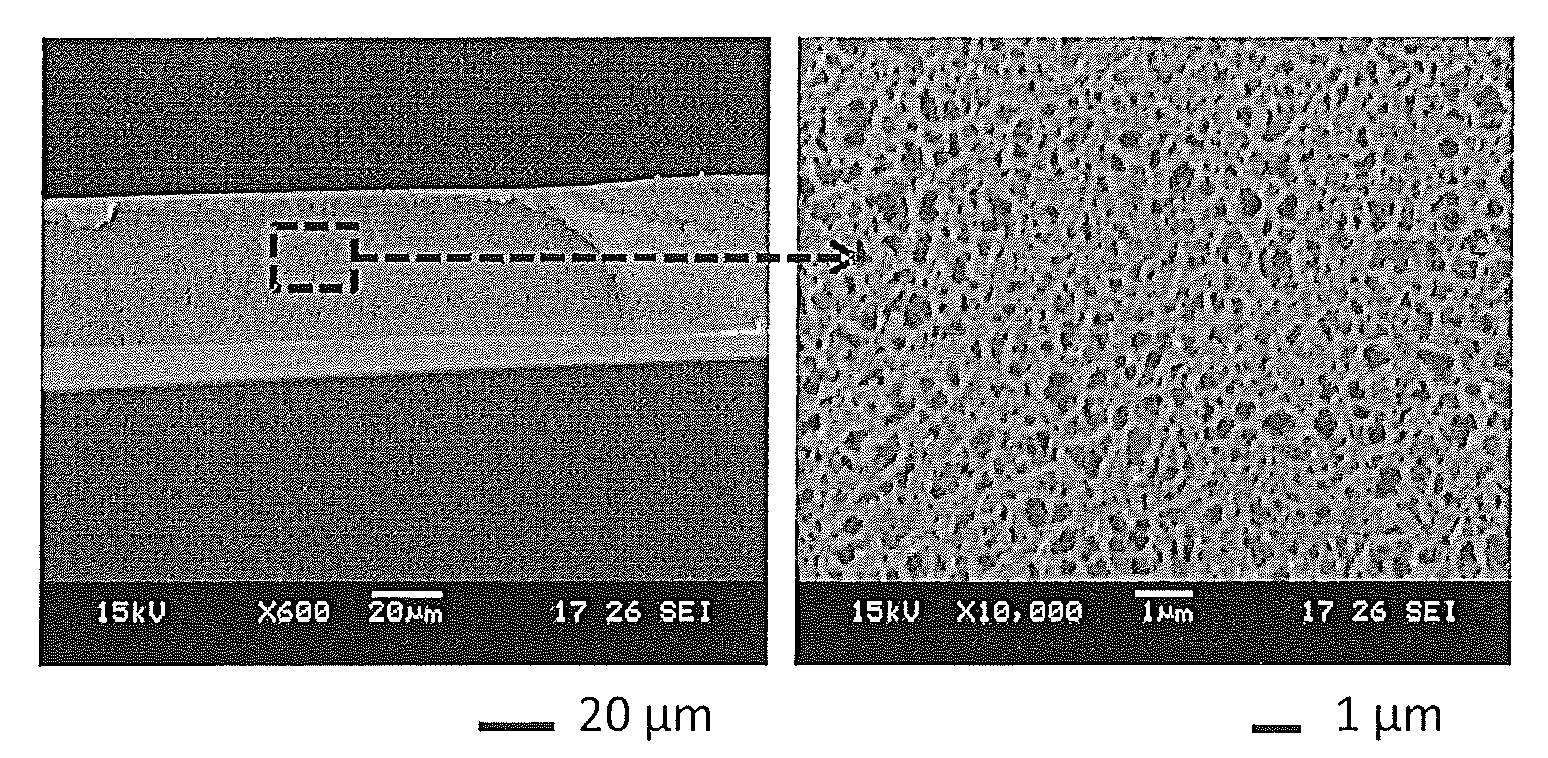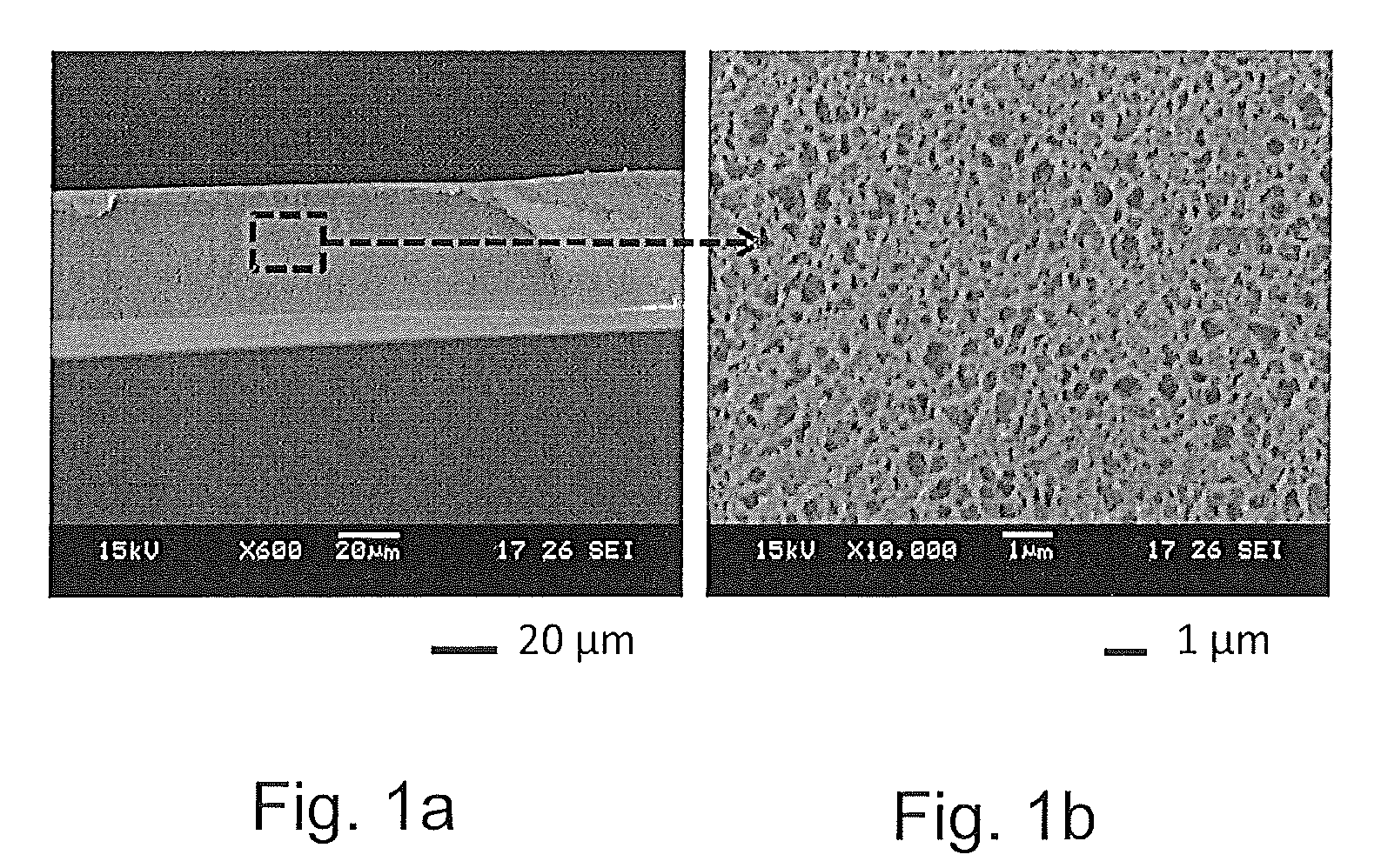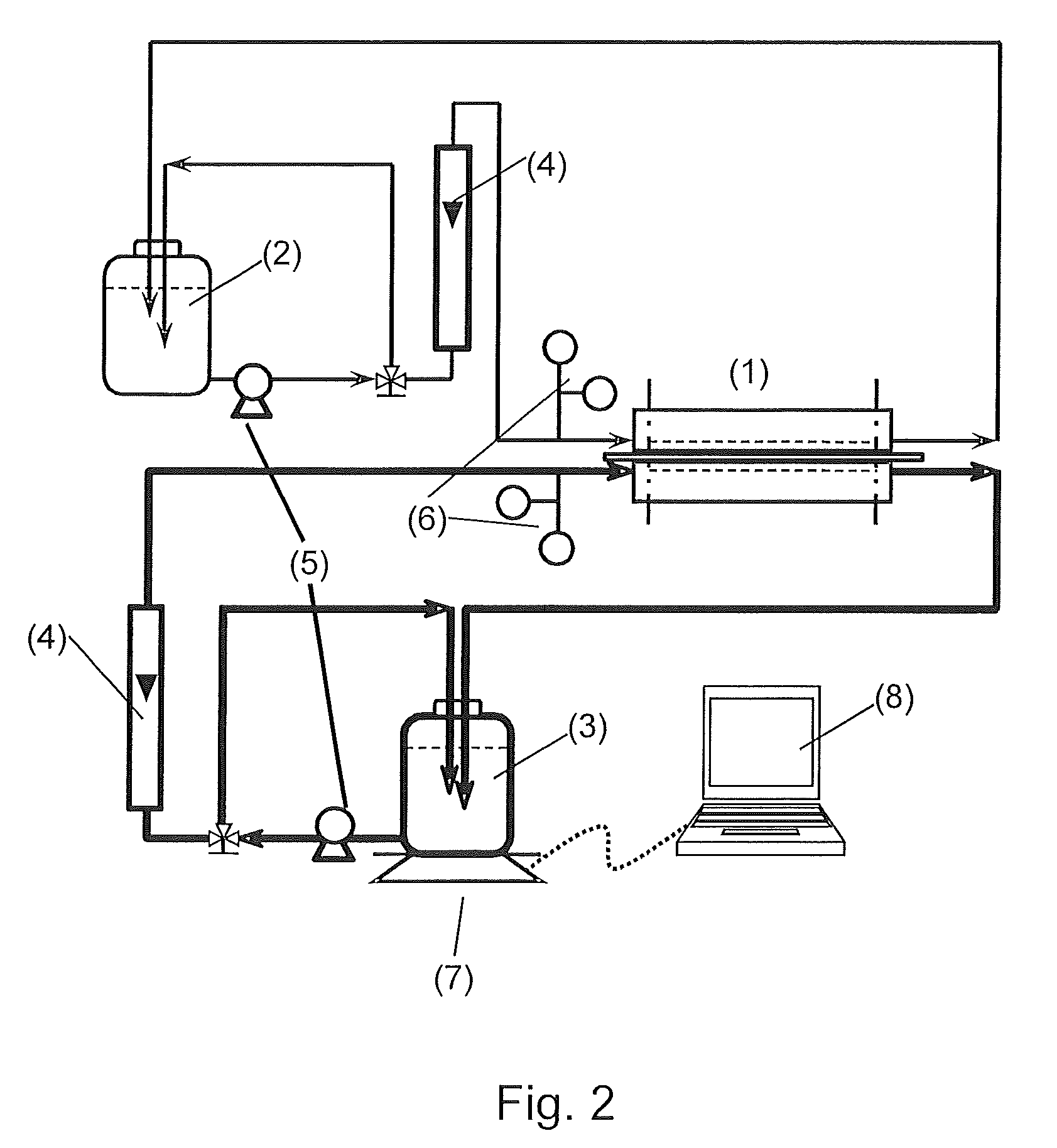Composite membranes comprising a sulfonated polyarylether and their use in forward osmosis processes
a polyarylether and composite membrane technology, applied in the direction of membranes, filtration separation, separation processes, etc., can solve the problems of insufficient water permeation and separation performance of known fo membranes, detrimental to feed solutions, limited number of commercially available fo membranes, etc., and achieve high water flux and superior properties.
- Summary
- Abstract
- Description
- Claims
- Application Information
AI Technical Summary
Benefits of technology
Problems solved by technology
Method used
Image
Examples
example 2
Production of Thin Film Layer (F) onto Substrate Layer (S)
[0225]The substrate (substrate layer (S)) based on sulfonated polyarylethers as produced in Example 1 was used for formation of a thin polyamide layer (film layer (F)). The formation of a polyamide layer onto the substrate layer was based on the interfacial polymerization. The substrate layer was first immersed in 2 wt % of MPD (metaphenylendiamine) in deionized water (DI water) for 1 minute. Thereafter, filter paper was used to remove the water droplets in the membrane surface. Subsequently, the top surface of membranes was brought into contact with the 0.05 wt % TMC (trimesoyl chloride) solution in n-hexane for 15 seconds. The resultant membrane was dried at 60° C. for 1 minute, followed by drying in the air for 2 minutes. The resultant membrane was further cleaned in deionized water before use in forward osmosis process (FO). After this process, a thin polyamide film (film layer (F)) was formed on the substrate layer (S).
[...
example 3
Forward Osmosis Process Using Thin Film Composite Membrane
[0228]The thin film composite membrane produced as described in Examples 1 and 2 was tested in a forward osmosis (FO) experiment.
[0229]FO experiments were conducted on a lab-scale circulating filtration unit. The schematic diagram of the filtration unit is shown in FIG. 2.
[0230]The crossflow permeation cell (1) was a plate and frame design with a rectangular channel on each side of the membrane. The feed solution (2) and the draw solution (3) were in storage tanks and circulated via pumps (5). The solution flows were adjusted using flow meters (4). The solution flow velocities during the FO process were kept at 6.4 cm / s for both feed solution (2) and draw solution (3) which was co-currently flowed through the cell channels. The temperature and the pressure of each solution were measured (6). The temperatures of the feed and draw solutions were maintained at 22±0.5° C. The pressures at two channel inlets were kept at 1.0 psi.
[...
example 4
Forward Osmosis Process Using Sea Water
[0246]A forward osmosis process using the thin film composite membrane produced as described in Examples 1 and 2 was carried out similar to Example 3 using seawater as feed solution instead of deionized water. The feed solution concentration consisted of 3.5 wt % NaCl and the draw solution concentration (NaCl) was varied from 2 M (mol / L) to 5 M (mol / L).
[0247]The water flux in the FO mode and the PRO mode using varying draw solution concentration (NaCl) are summarized in Table 2:
[0248]
TABLE 2Water flux of inventive composite membrane using sea water(3.5 wt % NaCl solution) as feed in FO and PRO mode.Concentrationof NaClFO modePRO modedraw solutionWater fluxWater flux[mol / L][LMH][LMH]213.515319.521422.525.5525.527.0
[0249]It can be found that the water flux of thin film composite FO membrane can reach 15 LMH using 2M NaCl as draw solution tested under PRO mode.
PUM
| Property | Measurement | Unit |
|---|---|---|
| weight ratio | aaaaa | aaaaa |
| wt % | aaaaa | aaaaa |
| molecular weight | aaaaa | aaaaa |
Abstract
Description
Claims
Application Information
 Login to View More
Login to View More - R&D
- Intellectual Property
- Life Sciences
- Materials
- Tech Scout
- Unparalleled Data Quality
- Higher Quality Content
- 60% Fewer Hallucinations
Browse by: Latest US Patents, China's latest patents, Technical Efficacy Thesaurus, Application Domain, Technology Topic, Popular Technical Reports.
© 2025 PatSnap. All rights reserved.Legal|Privacy policy|Modern Slavery Act Transparency Statement|Sitemap|About US| Contact US: help@patsnap.com



